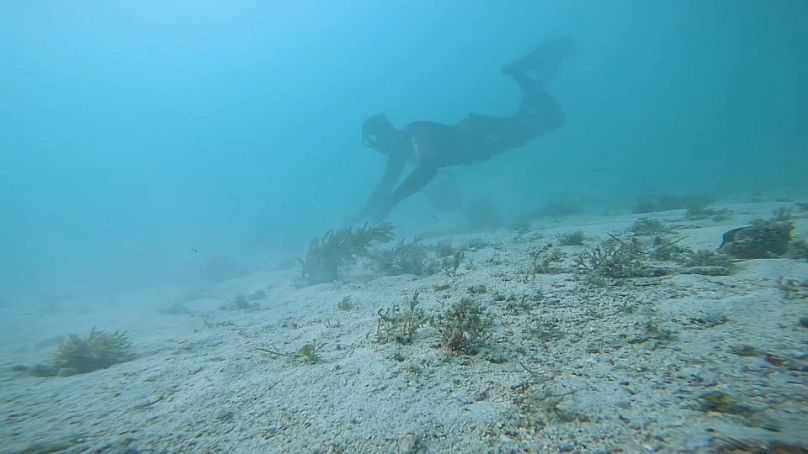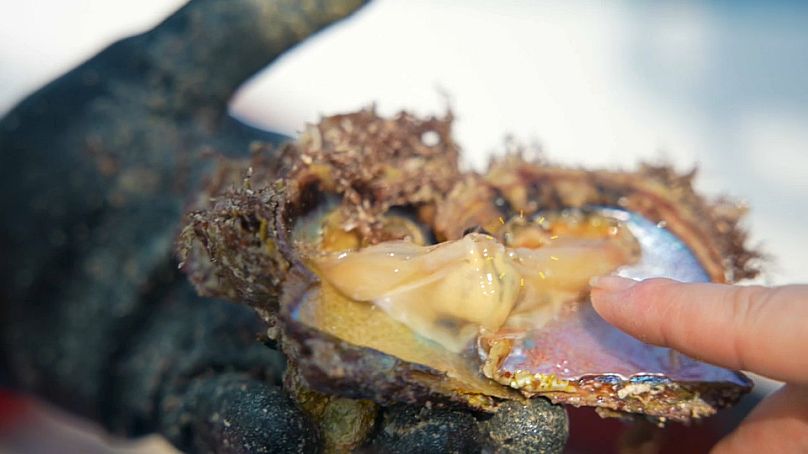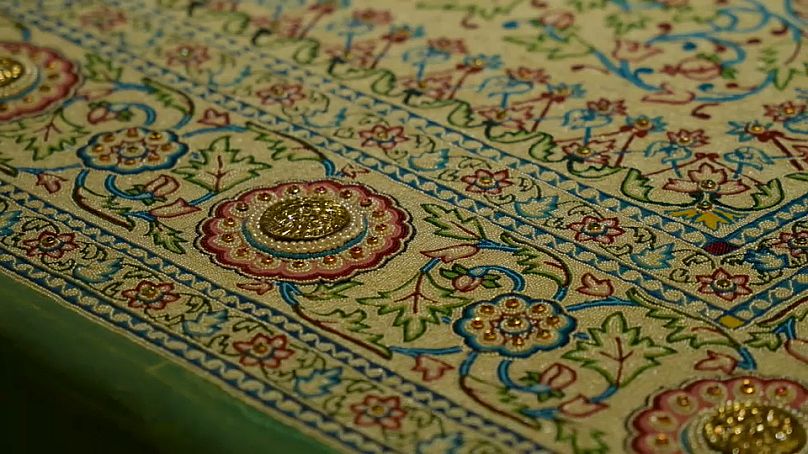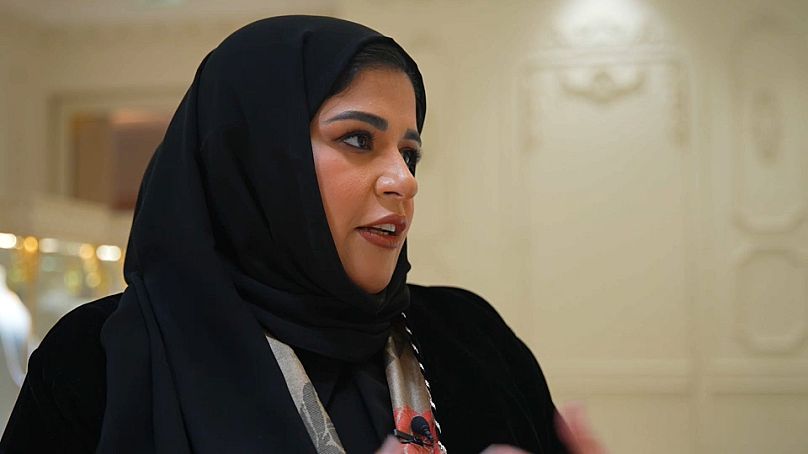Pearls were Qatar's first major export commodity. And despite competition from oyster farms, divers still go in search of nature's treasures
Thousands of years ago pearls were Qatar's first major export commodity. But the industry suffered badly in the last century when it faced competition from Japanese oyster farms.
Despite this, natural pearls retain their place as a premium product at the top end of the jewellery market. And in the waters off Qatar, hardy divers can still be found going out in search of nature's treasure.
A family history
Mohammed Abdulla al-Sada is one of the few divers who’s still seeking his fortune at the bottom of the ocean. For him, it is a family tradition.
"My grandfather, actually, he was a pearl diver," he says. "When I said to my father, I want to go to the sea to catch some fish as a second job and to go to the fish market. He said, 'Why? You are a diver, why don't you get some oysters and look for the pearls?' "
Oysters that contain pearls are a rarity and it takes a sharp eye to find them.
"First of all, you should know whether it's an old oyster or it’s a baby oyster," Mohammed explains. "How can you know? The size plus the thickness of the oyster. And also, there is another thing I'm looking for, a space behind. More space, more age. You know about that oyster, it means it's older than the others."
Though many pearl divers use tanks to stay underwater longer, Mohammed still practices the art of free diving. He’s trained to be able to hold his breath for long periods while he combs the seabed, just like his forebears. It's one of the oldest professions in the Gulf region, and in the past men also used to rely on tying stone weights to one leg and a nose clip as they descended deep to find oysters.
A streak of good fortune
On our trip Mohammed hits a streak of good fortune, finding several pearls. Smaller beads are relatively more common, but to find an oyster with a large natural pearl inside, it’s more like one in every 10,000. That gives you a sense, an idea as to why they’re so expensive and to many, so desirable.
But for Mohammed, this isn’t about making a wage. Natural pearl diving is a calling, a link to his past. And for him, this is about keeping old traditions alive.
"This is part of us," he says. "This is our culture. That's what our grandfather was doing for a living. And for now, we can make money also from it. So, there is a lot of reasons pushing me to do that thing. And I love it. I’m a diver."
Embroidered in Qatari culture
Apart from being vital to the livelihood of the local community, pearls are embroidered in Qatari culture and heritage. To learn more about this, I met with Jassim Al Kuwari at the National Museum of Qatar.
"The first exports of pearls were coming out of the Gulf, actually," he explains. "The Gulf pearls, especially the Basra pearls were considered the most expensive type of pearls because they have a unique, light fracturing structure to them, and they have unique shapes which make the rounded ones the most expensive ones.
"So, the pearls reached all over the world. Western Europe, all the way to China and East Asia. And one of the items that we have here in the gallery, especially in gallery number seven, which is at the centre of the museum, is the Baroda carpet, which was made in India by the Indian Maharajah of Baroda.
"So, pearls were used to decorate many pieces of furniture. Even the mother of pearl that is the lining or the essence that's on the inside of the oyster were used in many cultures and all over the world. For the Baroda carpet, it was a gift from the Indian Maharajah of Baroda to the Muslims, and to be a cover for the grave of the Prophet Mohammed, peace be upon him. So, he made an entire piece, an entire carpet of pearls and other precious gems."
The collapse of the industry
But the arrival of cultivated pearls triggered a rapid decline in the natural pearl industry.
"Until the 1930s, the main export of Qatar was the pearls," Jassim says. "But during that period, especially a Japanese man called Mikimoto Kokichi, he developed the cultivated pearl industry and with the cultivated pearl industry, this collapsed the natural Gulf pearl industry here because collecting 8,000 oysters from the waters, you would only yield 5 to 15 pearls max. They wouldn't always look good. Some of them would vary in shape, size and colour. But with the cultivated pearl industry, you can plant 8,000 oysters and collect the shape, colour and size that you want exactly, which dropped the price of the natural Gulf pearl. And then after that, the industry here on the Gulf slowly died over the 1920s and 1930s."
The memory of the industry lives on though, in the National Museum.
"We highlight the depth of the pearling industry," says Jassim. "Speaking about the Pearl Trader first and then the reach of the pearls to all over the world from Rome 2000 years ago all the way to North America in the 1930s. Speaking of the importance of the pearls during that period and how they were the most expensive type of jewellery to be worn by celebrities or royalties around the world."
Continuing the tradition
For some jewellery buyers though, natural pearls remain are irreplaceable
Nada bint Khamis Al-Sulaiti is an award-winning designer based in Doha, where she is Creative Director at Hairaat. Her Sakura Necklace won a Merit Award in International Jewellery Design Excellence from Hong Kong in 2017, and a Golden Award from A’ Design in 2015
"There is a market just for natural pearls," she says. "There are people who buy only natural pearls, and they don't believe in cultured pearls and we have a lot of clients in this region that they don't buy but natural pearls. Now, if we talk about that market, it's considered 5% of the market only. However, natural pearls are still and will always be in and will always be in style. Now for us, we use it primarily in high jewellery and bespoke pieces made to measure."
The collections at Hairaat take inspiration from the length and breadth of Qatar. The brand is internationally recognised, but all designs are rooted deep in the country’s natural beauty.
"I've been going with my parents around the country to see the desert, the sea, the ruins, old houses and whatnot," says Nada. "And I've always seen beauty. Ever since then, I've always wondered how can I use that in a creative way. And then I noticed that my language is jewellery, and I found a medium to translate the beauty that I see around me and everything in all the details we have here into wearable art and daily use pieces.
"I'm very proud of my origin," she continues. "I mean, I'm an international person. I've lived in Europe, I've lived around the Middle East, I've travelled all over the place. But I still am connected, rooted here. I like to learn from other cultures, but I want not to forget my origin and I'm proud of it."
















